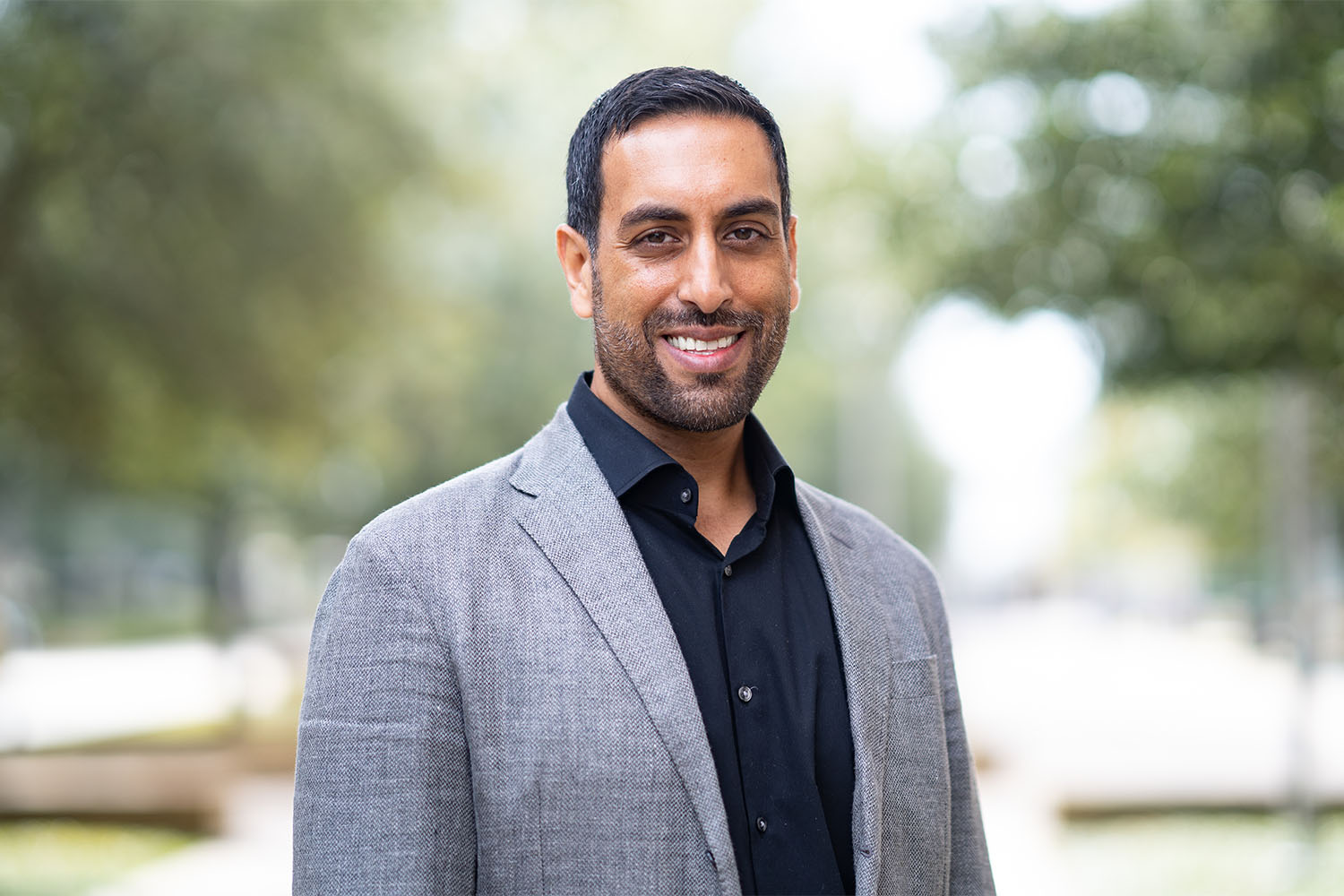Project Aims To Find Most Potent Roots of Aging Brain’s Ailments
By: Stephen Fontenot | March 24, 2023
Dr. Gagan Wig, a University of Texas at Dallas expert on the healthy and pathological aging of the brain, has received National Institutes of Health (NIH) funding to develop animal models of the social factors that are believed to affect aging humans’ susceptibility to neurological diseases.
The pilot grant is from the Animal Models for the Social Dimensions of Health and Aging Research Network, which is directed by researchers at Duke University, the University of Minnesota Medical School and The University of North Carolina at Chapel Hill through a grant from the NIH’s National Institute on Aging (R24AG065172).
Wig will focus on developing a mouse model of the progression of neurological disorganization in the aging brain so that he and his team can later isolate the specific variables that can modulate such conditions.

“We know that environmental and social factors contribute to age-related cognitive decline and brain disease, but it’s difficult to untangle in humans what the exact crucial exposures are,” said Wig, associate professor of psychology in the School of Behavioral and Brain Sciences. “Links between social adversity, health and mortality exist in other social mammals, so there is an opportunity to learn about exposures via animal models.”
In his neuroimaging lab in UT Dallas’ Center for Vital Longevity, Wig studies socioeconomic factors that predict the risk to aging adults of developing neurological diseases such as Alzheimer’s disease.
“The absence of a college education seems to result in greater declines in brain health during older age, measured from an individual’s brain network organization,” he said. “But why? It’s certainly not just about the diploma, but likely because education often translates to job opportunities. Having a well-paying and secure job is a strong predictor of things such as access to nutritious food and health care, adequate sleep, time for exercise, and ways to navigate stressful life events. We think these things matter for an individual’s brain network organization, but we need to be able to study them more directly.”
Wig’s research in humans has examined the functional specialization of the brain network — a trademark of a healthy brain — and how specialization breaks down as people age.
“From the way in which different regions of the human brain are interconnected, we derive a sense of a modular organization, which allows different parts of the brain to be functionally specialized,” he said. “In humans, the modules become less distinct over time, and evidence suggests that this process has bad outcomes.”
Rodent models are a powerful tool because of the animals’ relatively short lifespans and because their environments can be carefully measured, controlled and altered in experiments.
“We believe that decreasing brain network specialization is a general property of aging systems. This pilot study will allow us to study these processes.”
Dr. Gagan Wig, associate professor of psychology in the School of Behavioral and Brain Sciences
“With mice, we can look at exposures and outcomes in a way that you cannot in humans,” he said. “You can closely examine and in some cases even alter exposures early on — socialization, diet, sleep, exercise and stress. We can examine the impact of certain exposures at various times during their two- to three-year lifespan. By doing so, we hope we can begin to understand trajectories in a way that you can’t with humans, to see what matters most and when it matters.”
The pilot grant supports a one-year project that Wig hopes will result in further funding.
“If we see what we expect, then we can propose to do larger experiments,” he said. “We believe that decreasing brain network specialization is a general property of aging systems. This pilot study will allow us to study these processes in individual mice.”
The pilot grant will support the training of cognition and neuroscience doctoral student Ezra Winter-Nelson, who said that studying mice in a controlled environment “where we know everything from their genotype to their diet” could help identify critical factors affecting the age-related brain network decline that is seen in humans.
“Why do some people largely preserve their cognitive abilities with age while others see a steep decline in mental acuity?” Winter-Nelson said. “If mouse networks turn out to exhibit a similar pattern of decline to human networks, we can then use mice to study the structure of these networks across the lifespan with a level of rigor that is impossible to achieve in human research.”
Wig and his team will use existing functional brain-imaging data to first confirm that brain network organization in mice can be measured in a similar way as in humans. Columbia University researchers who are collaborating with Wig on this project — including Dr. Itamar Kahn, associate professor of neuroscience at the university’s Zuckerman Institute — have collected large-scale data for this purpose.
Wig’s team plans to use the existing data to evaluate whether analogous brain network changes exist in aging mice. If they find similar patterns of degradation in mice, researchers plan to study the factors they believe affect health. Wig hopes that long-term studies of the process in mice will lay the foundation for cross-species comparative analysis to identify the most potent causes of neurological decline.
“Our goal is to be able to identify health and lifestyle factors that can slow down progression of age-related brain disease, such as Alzheimer’s,” he said. “We all have ideas about what matters, but it’s difficult to test these experimentally or even study them closely in humans. We envision this as a unique opportunity to determine what matters and what doesn’t — a path toward identifying things we might be able to modify in our lives.”
Media Contact: Stephen Fontenot, UT Dallas, 972-883-4405, stephen.fontenot@utdallas.edu, or the Office of Media Relations, UT Dallas, (972) 883-2155, newscenter@utdallas.edu.






